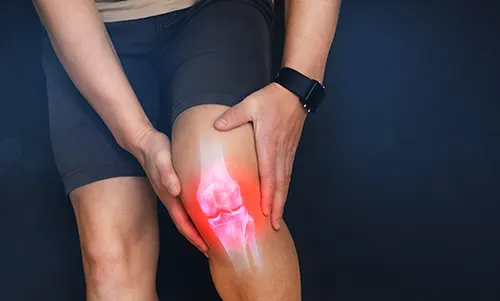Why Knee Tendinitis Feels Worse in Cold Weather — and How Chiropractic Care Can Help

As temperatures drop, many people with knee tendonitis begin to notice their discomfort increasing. What felt like a manageable ache in summer can turn into stiffness, soreness, or sharp pain once the cold sets in. But why does this happen — and what can you do about it?
At Stinson Chiropractic Center, we understand how seasonal changes can affect joint and tendon health. Here’s why your knees may be acting up this winter, and how chiropractic care can help you move comfortably again.
Why Cold Weather Aggravates Knee Tendonitis
1. Decreased Blood Flow
Cold temperatures cause blood vessels to constrict, reducing circulation to your extremities — including your knees. Less blood flow means less oxygen and fewer nutrients reaching your tendons, which can slow healing and increase stiffness.
2. Tight Muscles and Tendons
When you’re cold, your muscles instinctively tighten to conserve heat. This increased tension puts added stress on already inflamed tendons around the knee, worsening pain and limiting mobility.
3. Lower Activity Levels
In colder months, people tend to move less. Reduced activity can weaken surrounding muscles and cause joints to stiffen — making knee tendonitis symptoms more noticeable when you do move.
4. Changes in Barometric Pressure
Many patients report that their pain flares up before or during weather changes. Drops in barometric pressure can cause tissues around the knee to expand slightly, triggering discomfort in sensitive areas.
How Chiropractic Care Helps Ease Knee Tendonitis in Winter
1. Restores Proper Alignment
Misalignments in the spine, hips, or knees can place uneven pressure on tendons. Chiropractic adjustments help restore balance and improve joint mechanics, relieving stress on inflamed tissues.
2. Improves Circulation and Mobility
Gentle adjustments, soft-tissue therapy, and stretching techniques enhance blood flow and flexibility — helping warm up tight muscles and promote healing.
3. Reduces Inflammation Naturally
Chiropractic care focuses on reducing inflammation without relying on medication. Regular treatments can calm irritated tendons and improve your overall range of motion.
4. Personalized Exercise and Stretching Guidance
Your chiropractor can recommend targeted strengthening and stretching routines to stabilize your knee joint and prevent future flare-ups — even in the coldest months.
Don’t Let the Cold Slow You Down
Knee tendonitis can be frustrating, especially when winter weather makes it worse. But with consistent care and the right chiropractic approach, relief is possible.
At Stinson Chiropractic Center, we help patients manage and overcome seasonal joint pain through customized, natural care plans designed to restore comfort and mobility.
Contact us today to schedule your consultation and keep your knees feeling strong all winter long!





